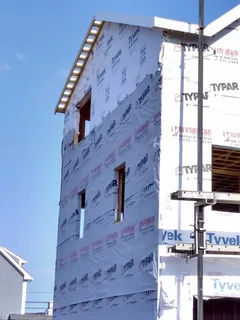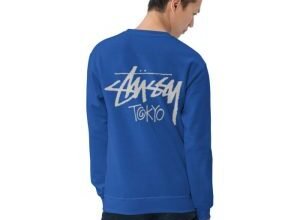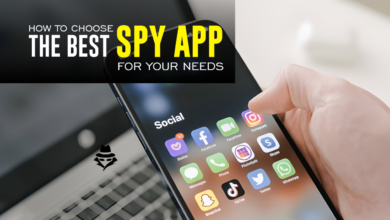
Online businesses and marketers have an arsenal of tools at their disposal to attract, engage, and convert visitors. Among these, pop-up banners stand out as a highly effective tool—as long as they’re used correctly. These eye-catching windows have evolved significantly from their often intrusive early days and are now a sophisticated, targeted, and value-driven feature in digital marketing.
This blog dives into everything you need to know about pop-up banners, from their benefits to how to use them strategically on your website. By the end, you’ll know how to leverage pop-up banners to increase your engagement, drive conversions, and enhance the user experience.
What Are Pop-Up Banners?
Pop-Up Banners are interface elements that appear on top of a web page’s main content. They can take various forms, including full-screen overlays, small notification boxes, or subtle slide-ins. While they’ve been around for years, modern pop-up banners aren’t those generic, unbearable interruptions that plagued the internet in the late 1990s. Instead, they are designed to be highly specific to the viewer and their intent.
Marketers today use pop-up banners for a variety of purposes, including:
- Capturing email leads.
- Offering discounts or promotions.
- Highlighting new products or features.
- Delivering urgent updates, such as a flash sale or stock alerts.
Now that you know what pop-up banners are, let’s explore their role in online marketing and why they’re vital for your business.
Benefits of Using Pop-Up Banners
When designed thoughtfully, pop-up banners bring several advantages to your website. Here are some of the most compelling benefits:
1. Increased Conversion Rates
Pop-up banners are excellent tools for focusing a visitor’s attention on a single call-to-action (CTA). For instance, enticing visitors with a limited-time offer or inviting them to subscribe to your newsletter with a discount can significantly increase your conversion rates.
2. Improved Lead Generation
By offering value in exchange for an email address—like a free resource or a coupon—pop-up banners effectively generate leads. Studies show that the average conversion rate for email pop-ups is 3.09%, with high-performing ones seeing rates of 9% or more.
3. Enhanced User Experience
When done correctly, pop-ups don’t feel disruptive but instead provide value by surfacing relevant offers or information. Exit-intent pop-ups, for example, display a message just as visitors are about to leave, giving them a reason to stay.
4. Builds Email Lists
Pop-up banners are instrumental in capturing high-quality email leads while seamlessly integrating them into your email marketing funnel. Businesses of all sizes use them to grow their subscriber lists exponentially.
5. Promotes Special Offers
Whether you use them to showcase free shipping, discounts, or exclusive products, pop-ups are a perfect way to deliver real-time updates directly to your audience.
How to Use Pop-Up Banners Strategically
First Pop-Up Banners Keyword Insight
Strategic use of pop-up banners revolves around understanding your audience and leveraging triggers that align with their behavior. For example, exit-intent banners catch your visitors as they’re about to leave, often reversing the decision with an enticing offer. Similarly, time-delayed pop-ups wait for visitors to stay engaged for a specific period before appearing.
One of the most critical elements of effective pop-up banners is mobile optimization. With over half of internet traffic coming from mobile devices, ensuring your banners are mobile-friendly is essential. If your pop-ups disrupt navigation or don’t scale properly, users may exit the site altogether.
Placement and Timing
The placement and timing of your pop-up banners matter immensely. Poorly timed banners can frustrate users, causing them to abandon the webpage. Instead, use:
- Delayed pop-ups after 10–30 seconds of engagement.
- Exit-intent banners triggered only when the user is about to leave.
- Scroll-percentage banners that display after a visitor scrolls partway down a page.
The goal here is to catch your audience’s attention without annoying them.
Personalization in Pop-Ups
Generic pop-ups are far less effective than personalized ones. Tailor your message based on:
- User behavior (e.g., what they’ve clicked on or which page they’re browsing).
- Geolocation (e.g., displaying region-specific offers).
- Previous interactions (e.g., returning visitors can see unique offers).
Consider using dynamic content, such as greeting a returning customer by name, which can increase engagement significantly.
Popular Types of Pop-Up Banners
Different types of pop-up banners serve unique purposes. Here’s a breakdown of the most common ones and how they can help:
1. Welcome Pop-ups
Appear when a visitor lands on your site, often used to offer a discount or highlight important information.
2. Exit-Intent Pop-ups
Triggered when users move their cursor over the close button or browser tab, aimed at retaining visitors.
3. Scroll-Based Pop-ups
Appear once a user scrolls to a certain point on a page, making them less disruptive.
4. Time-Triggered Pop-ups
Scheduled to display after a visitor has spent a specific amount of time on a page, ensuring they’re already engaged.
Last Pop-Up Banners Keyword Insight
While pop-up banners have undeniable potential, abuse or poor design can alienate your audience. For example, full-screen pop-ups blocking content or repeated pop-ups on every page can frustrate visitors.
To avoid this, set a frequency cap on how many times a pop-up can appear for the same visitor. Additionally, always include an easily visible “Close” button. User-friendly design builds trust, making visitors more likely to engage.
Real-World Success Stories
Several brands have successfully used pop-up banners to supercharge their marketing efforts. Below are two inspiring examples:
1. Kate Spade
The high-end retailer implemented pop-ups that offered 15% off for new visitors who subscribed to their email list. Over 50% of pop-ups ended in conversions, helping grow their subscriber base.
2. Moz
Moz, a leading SEO software provider, uses pop-ups to invite visitors to download free guides or attend webinars. These pop-ups are highly contextual, targeting users based on the pages they visit.
Leverage Pop-Up Banners to Maximize Engagement
Done right, Pop-Up Banners are not just a tool—they’re an integral part of your marketing strategy. They provide unmatched visibility, improve engagement, and convert fleeting visitors into loyal customers. However, the key lies in crafting messages that resonate and understanding when and where to show them.
Start exploring how pop-ups can transform your website today and make every visit count! Remember, simplicity and relevance always win the day.

